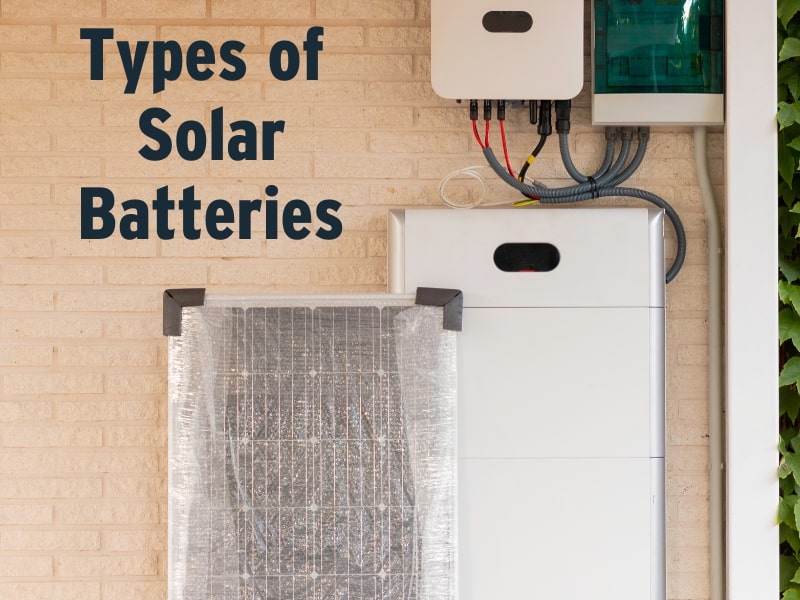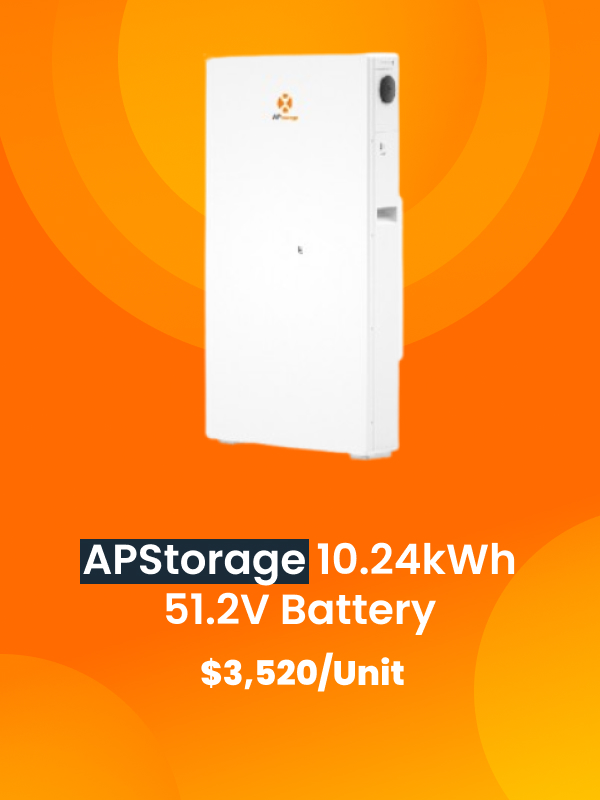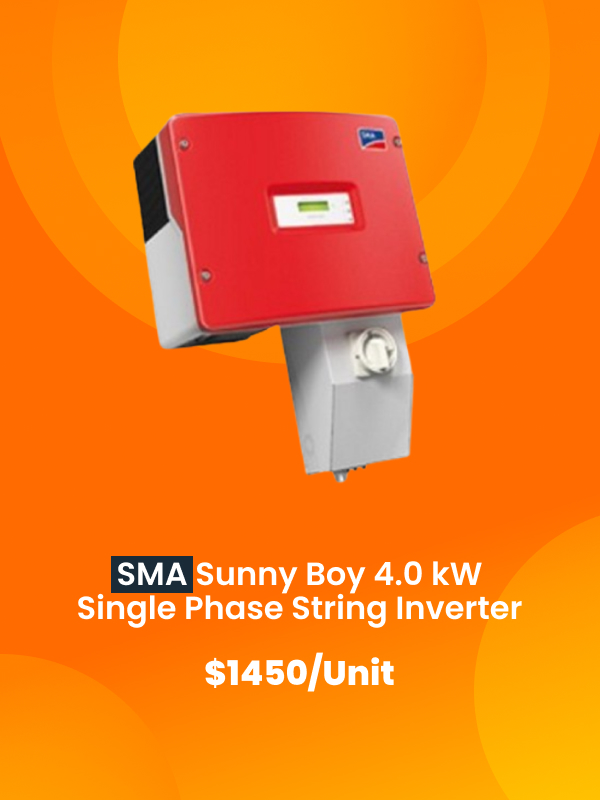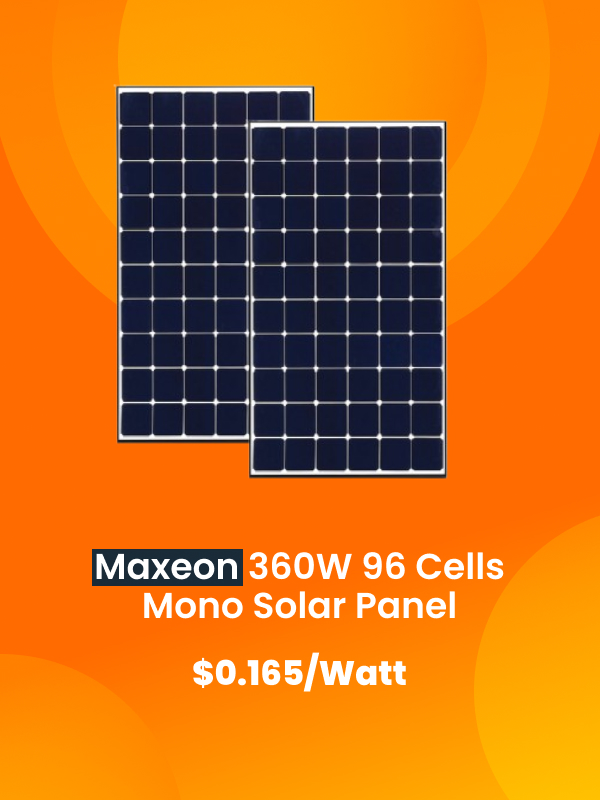Need more information about solar batteries?
We have what you’re looking for!
This blog post will show you how to use solar batteries for everything from grid scale to residential storage. First, we’ll cover how solar batteries work before discussing the most common types of solar batteries available. Then we’ll discuss how you can choose the correct battery for your project. \
What will be covered in the article:
- Lithium-ion batteries
- Lead acid (deep cycle) batteries
- Nickel cadmium (NiCad) batteries
- Flow batteries
What Are Solar Batteries?
A solar battery is a device that stores energy generated by your solar panels during the day and releases that energy when the sun goes down or when demand is high. Using batteries to store energy allows you to:
- save money
- make the most of the energy you produce rather than relying on the grid
- reduce your reliance on non-renewable energy sources
Batteries are optional rather than necessary, but their usage is booming in leading solar states.
Consider that across the U.S., 6% of residential and 2% of non-residential solar systems included batteries in 2020.
One year later, in 2021, over 90% of California’s utility-scale projects included batteries. Texas is expected to install 7.7 GW of solar in 2023, accounting for over a quarter of the country’s installations. 42% of those projects are anticipated to include storage, compared to last year’s 27%.
As America’s solar leaders continue to load up on storage, we expect other states to do the same.
So the question is, should you add storage to your solar project? And if so, which battery makes the most sense for you?
Types of Solar Batteries
Next, we’ll discuss the pros and cons of four types of solar batteries: lithium-ion, lead acid (aka deep cycle), nickel-cadmium, and flow batteries.
1. Lithium-ion batteries

Lithium-ion batteries are rechargeable batteries most commonly used in smartphones and laptops due to their light weight and high energy density. They are frequently used to charge homes and vehicles.
Let’s take a look at their pros and cons.
Pros
The pros of the lithium-ion battery are all about practicality and versatility.
Lightweight and portable- Their light weight makes them easy to transport and install.
High energy density– These batteries store a large amount of energy in a compact size, making them ideal for applications with limited space, like solar systems.
Long cycle life– They can be charged up to thousands of times without significant degradation, which gives them a long lifespan.
Efficient charging and discharging– Known for their speedy charging and efficient power delivery
Lightweight and portable- They’re handy for portable solar kits or off-grid applications.
Low self-discharge rate– They discharge less energy than other batteries in limited-use situations and require less recharging.
Versatile– They can be used in a wide range of applications, which means you’re just as likely to see them in small-scale residential systems as large-scale commercial installs. You can use them with wind or hydropower projects.
Wide temperature tolerance– Lithium Ion batteries are effective in temperatures ranging from sub-zero to 140 degrees F.
Cons
High cost– A lithium-ion battery installation can be expensive, which can be a barrier.
Safety and environmental risks- If they have design defects, are assembled incorrectly, or are recharged improperly, these batteries risk overheating or starting on fire. When disposed of improperly, they become combustible waste that can start fires that are difficult to put out.
Capacity fade– You may notice that computers with lithium-ion batteries lose the ability to hold a charge over time. The same occurs with solar systems with lithium-ion batteries.
2. Lead acid (deep cycle) batteries
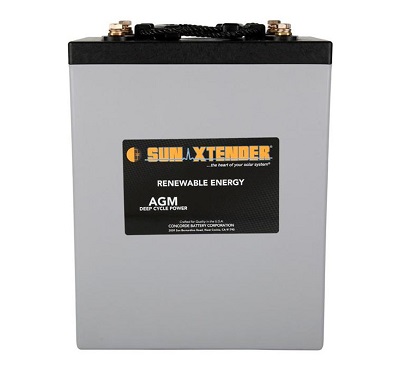
Lead acid or deep cycle solar batteries are a cost-effective, tried and true technology. These batteries produce steady output over long stretches and run up to 80% discharge reliably, making them popular for off-grid and mobile usage.
Pros:
Cost-effective– Deep cycle batteries are more affordable than other options, making them popular for budget-conscious solar customers.
Widely available- Lead acid batteries have been used for years and are manufactured and supplied widely. They’re available in various sizes and configurations to meet your needs.
Tolerant of high temperatures- While not as tolerant of high temperatures as Lithium Ion, deep cycle batteries can perform reliably in high temperatures.
Deep discharge capability– These batteries perform well in off-grid applications and other situations where deep discharging is needed.
High recyclability– End-of-life batteries are up to 99% recyclable. The lead and other components can produce new batteries or other items.
Cons
Limited cycle life: Lead-acid batteries have a shorter cycle than other batteries, lasting a few hundred cycles which means earlier replacement.
Higher self-discharge rate: They have a shorter shelf life than other batteries because they self-discharge or lose energy when not in use.
Some maintenance required: You must equalize your deep cycle batteries periodically, ideally once a month, to ensure they charge correctly.
Heavy and bulky: Deep cycle batteries weigh up to 70 pounds. They are best for mobile applications with dedicated space, like boats and RVs.
Environmental concerns: While they’re recyclable, the lead content can harm the environment if disposed of improperly.
3. Nickel cadmium (NiCad) batteries
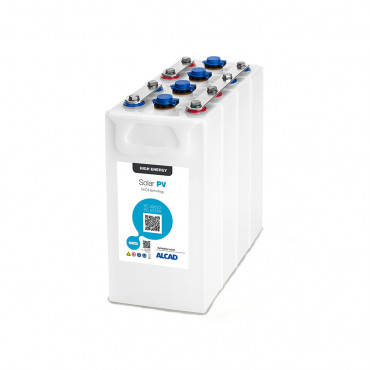
Pros
High energy density: Nickel Cadmium packs a lot of punch for its size, which makes it very practical
High cycle life: Ni-Cd batteries are capable of lasting around 2,000-2,500 cycles on average
Wide operating temperature range: Ni-Cd batteries produce 100% power in extreme cold to high heat, making them suitable for projects in diverse climates.
Rapid charging: Ni-CD batteries reach full capacity quickly
Low maintenance: Minimal maintenance compared to other technologies. No equalization changes or electrolyte level checks.
Cons
Memory effect: Ni-Cd batteries are susceptible to the memory effect, similar to Lithium Ion’s capacity fade. If Ni-Cd batteries are not fully discharged before recharging, they appear to “remember” the reduced capacity.
Cadmium toxicity– Cadmium is toxic to the environment and must be handled properly during manufacturing, use, and disposal.
Low energy density– Ni-Cd energy density is low compared to Lithium Ion batteries, which means their capacity is low relative to their physical footprint.
Lower voltage output– Because Ni-Cd batteries put out lower voltage, they can be less efficient than other batteries. For example, you may need additional converters to match the output from a Lithium Ion battery.
Higher self-discharge rate– They need to be charged more frequently due to losing energy more quickly while not in use.
4. Flow Batteries
Flow batteries are rechargeable batteries that transfer, or flow, electrolyte fluid from a central storage tank to two exterior storage units. Because of their high storage capacity, they are being used increasingly for large-scale projects.
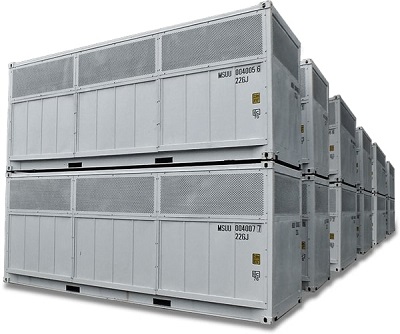
Pros
Scalability- Flow batteries are scalable, allowing for flexible sizing and customization based on storage requirements. Because storage capacity can be scaled up or down by adjusting the size of the electrolyte tanks, they can be used for a wide range of applications, including large-scale grid-level applications, electric vehicles, and stand-alone power systems.
Deep discharge capability– They can be fully discharged without affecting their performance
Long cycle life– Flow batteries have a long service life, proven to reach up to 20,000 cycles, making them durable and cost-effective.
Good safety profile– Flow batteries have a good safety profile for two reasons. Vanadium, the primary component of flow batteries, is an environmentally safe element. And unlike other batteries, they do not contain any flammable materials.
Cons
Low energy density- While they are scalable, they do require a large physical footprint.
Complex design means higher cost- The elaborate design of flow battery technology often requires additional components such as pumps, tanks, and membrane systems. Equipment and installation costs can get steep.
Higher maintenance– The electrolyte solution must be monitored and replenished regularly, making these systems impractical for residential customers. While the system has a longer life cycle, there are additional costs.
The bright idea
The first two things customers usually consider when choosing a solar battery are cost and energy savings over time. But it’s also essential to consider voltage, cycle life, maintenance requirements, and compatibility with your solar panels and inverter.
With some additional guidance from our solar professionals, you can choose the right solar battery for your needs and maximize your solar investment.
Contact our sales team today if you’re ready to discuss which solar battery makes the most sense for your project.

